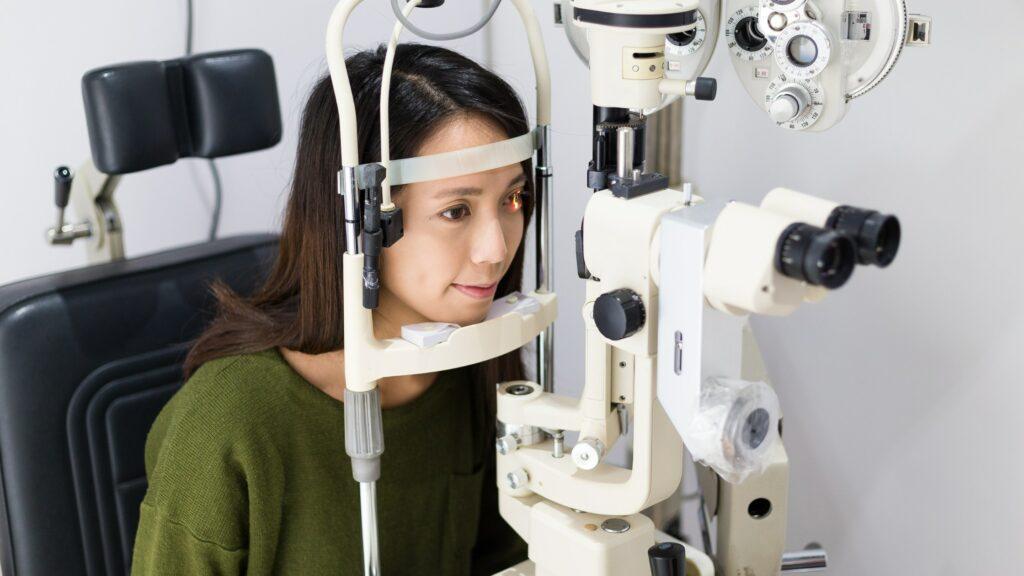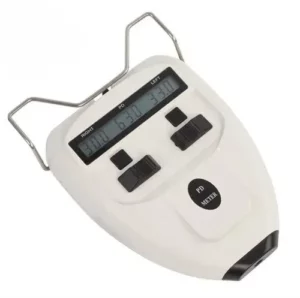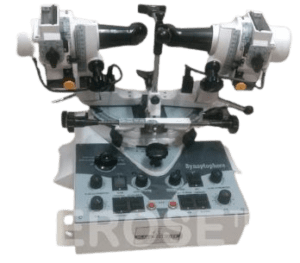Are you curious about the cutting-edge technologies that are revolutionizing eye care? Look no further! In this extensive guide, we will take you on an illuminating journey through the world of Ophthalmic Diagnostic Equipment. From exploring the different types and applications to understanding the guidelines for usage, maintenance, and futuristic advancements, we have you covered. But that’s not all! We will also delve into the invaluable role of Ophthalmic Diagnostic Equipment in treating various eye diseases and conditions. Brace yourself for a deep dive into the exciting realm of virtual reality and its remarkable impact on ophthalmic training. Additionally, we will uncover the intricacies of retinal detachment surgery, a crucial procedure for restoring vision.
What Are Ophthalmic Diagnostic Equipment?
These sophisticated instruments play a crucial role in providing accurate assessments, enabling early detection, and facilitating effective treatment plans. This knowledge empowers eye care providers to deliver precise diagnoses and develop tailored treatment approaches, while patients gain insights into the significance of these tools in maintaining and improving their ocular health. Stay informed about the guidelines for using ophthalmic diagnostic equipment, the benefits they offer, maintenance requirements, and the exciting futuristic advancements driving the field of ophthalmology. By exploring these aspects, you can deepen your understanding of ophthalmic diagnostic equipment and its crucial role in the pursuit of optimal eye care.
Exploring Different Types and Applications of Ophthalmic Diagnostic Equipment
Ophthalmic diagnostic equipment, where cutting-edge technology meets the intricate realm of eye care. From sophisticated imaging devices to precise measuring instruments, each type of equipment plays a crucial role in diagnosing and monitoring various eye conditions.
- Optical Coherence Tomography (OCT): It uses a special method involving light waves to capture highly detailed and clear images of the different structures inside the eye. This remarkable technique allows doctors to examine cross-sectional views of the eye, giving them a deeper understanding of its inner workings.
- Visual Field Analyzers: This information aids ophthalmologists in diagnosing and managing conditions affecting peripheral vision, enabling early intervention and appropriate treatment strategies. Through the precise and objective measurement of visual field sensitivity, these devices contribute significantly to the comprehensive evaluation of patient’s visual health, ultimately improving their overall quality of life.
- Corneal Topography Systems: Corneal topography systems are advanced diagnostic tools that provide invaluable insights into the shape and curvature of the cornea. This information is particularly crucial when fitting contact lenses, as it allows for precise customization and optimal comfort. Additionally, corneal topography systems play a vital role in evaluating the outcomes of corneal surgeries, ensuring their effectiveness and success.
- A-Scan and B-Scan Ultrasound: Ultrasound technology is used to assess the internal structures of the eye, particularly when visualization is challenging. A-scan ultrasound measures the eye’s axial length for precise intraocular lens calculations, while B-scan ultrasound provides detailed imaging of the posterior segment, aiding in the diagnosis of retinal detachments and tumors.
- Fundus Cameras: Fundus cameras are advanced imaging devices that capture detailed and high-resolution images of the retina. These images provide valuable insights into the structures, blood vessels, and abnormalities present in the retina. By using fundus cameras, healthcare professionals can gain a deeper understanding of the patient’s eye health and make informed decisions regarding their diagnosis and treatment.
Each type of equipment brings a unique set of capabilities, allowing clinicians to make precise diagnoses and monitor the progression of eye conditions. By staying informed about the latest advancements and specific use cases for each equipment type, we can harness the power of technology to improve patient outcomes and enhance the quality of eye care.
Guidelines for Using Ophthalmic Diagnostic Equipment
Ophthalmic diagnostic equipment plays a critical role in assessing and managing various eye conditions. This section provides a comprehensive overview of the essential guidelines, procedures, and best practices for utilizing ophthalmic diagnostic equipment effectively.
- Proper Procedures and Protocols: Familiarize yourself with the manufacturer’s instructions and guidelines for operating each specific piece of equipment. Each device may have unique procedures and protocols that need to be followed.
- Training and Competence: Before using ophthalmic diagnostic equipment, undergo comprehensive training to develop the necessary skills and competence. Stay updated on the latest advancements and techniques through continuing education and professional development opportunities.
- Patient Preparation: Adequate patient preparation is crucial for obtaining accurate results. Follow the recommended pre-examination protocols, which may include instructions regarding fasting, medication usage, and eye hygiene. Communicate clearly with patients, explaining the purpose and process of the examination to alleviate any concerns or anxiety.
- Safety Precautions: Prioritize the safety of both yourself and the patient during the examination. Adhere to standard infection control measures, including hand hygiene, the use of personal protective equipment, and proper disinfection of equipment between patients.
- Quality Assurance and Calibration: Regularly calibrate and maintain the equipment according to the manufacturer’s guidelines. Conduct routine quality assurance checks to ensure the accuracy and reliability of the measurements. Perform periodic inspections, including verifying the accuracy of the equipment against known standards.
- Handling and Storage: Handle the ophthalmic diagnostic equipment with care to prevent damage or malfunction. Follow proper handling techniques, such as avoiding excessive force or rough movements.
- Data Documentation and Interpretation: Accurate documentation of examination findings is essential for effective patient management. Record the measurements, observations, and any relevant clinical information in a standardized manner.
- Challenges and Troubleshooting: Be aware of potential challenges and limitations associated with ophthalmic diagnostic equipment. Familiarize yourself with troubleshooting techniques to address common issues that may arise during usage.
Uncovering the Benefits and Scope of Ophthalmic Diagnostic Equipment
Ophthalmic diagnostic equipment offers a wide range of benefits that significantly contribute to the field of eye care. By utilizing advanced imaging technologies and diagnostic tests, this equipment plays a crucial role in the early detection, precise diagnosis, and effective management of various eye conditions. Capturing detailed images of the eye’s structures, allows healthcare professionals to identify potential issues before they progress to more severe stages. This early detection facilitates timely interventions, leading to better treatment outcomes and preservation of vision.
The scope of applications for ophthalmic diagnostic equipment is vast, encompassing various ophthalmic specialties. From general eye examinations to specialized fields such as glaucoma, retina, and cornea, this equipment is integral in evaluating different aspects of eye health. It allows for comprehensive assessments, aiding in the diagnosis and monitoring of conditions across the spectrum of ophthalmology. Not only does ophthalmic diagnostic equipment benefit patients, but it also enhances the capabilities of clinicians and researchers. By providing valuable insights into the intricacies of eye health, this equipment facilitates advancements in medical knowledge and treatment strategies. It supports ongoing research efforts, enabling scientists to gain a deeper understanding of eye conditions and develop innovative therapies.
Ophthalmic Diagnostic Equipment Maintenance: Ensuring Longevity and Accuracy
Proper maintenance is crucial for ophthalmic diagnostic equipment to ensure its longevity and accuracy in delivering reliable results. By adhering to regular maintenance protocols, including cleaning, calibration, and inspections, you can optimize the performance and extend the lifespan of your equipment.
Regular cleaning of lenses, screens, and surfaces helps maintain clear visibility during examinations, while calibration ensures accurate measurements and precise diagnostic outcomes. Inspections help identify any potential issues or malfunctions early on, allowing for timely repairs and preventing any disruptions in patient care. Neglecting maintenance can have serious consequences, including inaccurate readings, compromised diagnostic accuracy, and potential equipment failure. Regular maintenance not only safeguards the integrity of your diagnostic equipment but also enhances patient safety and the overall quality of care provided.
Retinal Detachment Surgery: Restoring Vision
Retinal detachment surgery aims to reattach the detached retina and ensure its proper functioning. Several surgical techniques may be employed based on the severity and location of the detachment. One common procedure is vitrectomy, where the vitreous gel inside the eye is removed and replaced with a gas bubble or silicone oil. The gas bubble or silicone oil then exerts pressure on the retina, helping to reattach it to the underlying tissue. Another technique, known as scleral buckle surgery, involves the placement of a silicone band around the eye to provide external support and alleviate tension on the retina.
Postoperative care is crucial for a successful recovery after retinal detachment surgery. Patients may be required to position themselves in specific ways to ensure proper healing and reattachment of the retina. Finding a skilled retinal surgeon who specializes in this procedure is crucial for optimal outcomes. Retinal detachment surgery has proven to be highly successful in many cases, allowing individuals to regain their vision and preserve their eye health.
Futuristic Advancements in Ophthalmic Diagnostic Equipment
Prepare to be amazed by the futuristic advancements that are transforming the landscape of ophthalmic diagnostic equipment. From artificial intelligence to virtual reality and 3D printing, these cutting-edge technologies are revolutionizing how eye conditions are diagnosed and managed. AI-powered algorithms analyze vast amounts of data, aiding in the early detection and accurate diagnosis of eye diseases. VR simulations provide immersive training experiences, enabling ophthalmology residents and surgeons to enhance their surgical skills and decision-making abilities in a safe environment.
Furthermore, 3D printing enables the creation of customized ophthalmic devices and models, allowing for precise surgical planning and improved patient outcomes. These advancements hold the promise of enhanced accuracy, efficiency, and patient satisfaction in ophthalmic diagnostics and treatment. As research and development in these fields continue to evolve, the future of ophthalmic diagnostic equipment looks promising. Stay informed about the latest advancements and their potential applications in ophthalmology, as they pave the way for more effective and personalized patient care. Embrace the exciting possibilities and anticipate the transformative impact these futuristic advancements will have on the field of ophthalmic diagnostics and beyond.
Introducing Medzell: A cutting-edge B2B platform revolutionizing the promotion of Indian medical devices in emerging markets. Experience the future of healthcare procurement and discover a wide range of innovative products. With its futuristic approach, Medzell serves as a bridge, connecting medical device manufacturers, suppliers, and distributors with potential buyers around the world.
Through Medzell, healthcare professionals and organizations gain access to a wide range of high-quality Indian medical devices, ensuring that they have the necessary tools to provide exceptional patient care. This platform fosters collaboration, facilitates the exchange of knowledge, and opens up opportunities for global partnerships in the medical industry. Discover the immense potential of Medzell in transforming the healthcare landscape. Explore the diverse range of Indian medical devices available, ranging from ophthalmic diagnostic equipment to cutting-edge surgical instruments. Embrace the future of medical technology through Medzell and revolutionize patient care in emerging markets.
Ophthalmic Diagnostic Equipment From Leading Indian Manufacturers
DP-5179 Synoptophore Stereo Vision Test
The DP-5179 Synoptophore Stereo Vision Test is cutting-edge ophthalmic diagnostic equipment manufactured by Kashmir Surgical India Pvt. Ltd., a leading manufacturer, and global supplier based in India. With a strong reputation in the industry, Kashmir Surgical is committed to delivering high-quality products to healthcare professionals worldwide. Designed to facilitate the detection and treatment of squint illnesses, the DP-5179 Synoptophore Stereo Vision Test offers a range of advanced features. It includes a unique pair of after-image slides that are used in conjunction with a built-in after-image device. By utilizing these slides and the bright light source produced by a switch on the base, the test allows for the identification of abnormal retinal connections.
ASF Digital PD Meter Pupilometer
A.S.F. Universal, renowned in the industry for its innovative solutions, is a leading manufacturer and global supplier based in India. The ASF Digital PD Meter Pupilometer employs the principle of Positive Displacement (PD) Flow measurement, making it a highly precise and versatile instrument. Unlike conventional flow meters, it utilizes volumetric flow measurement, ensuring accurate readings with each turn. This feature enables the measurement of intermittent flows, extremely low flow rates, and liquids of virtually any viscosity. Healthcare professionals can rely on the ASF Digital PD Meter Pupilometer to obtain precise measurements of pupillary distance (PD) and ensure accurate fitting of eyeglasses and contact lenses.
Synopthophore
Introducing Synopthophore, a cutting-edge ophthalmic diagnostic device manufactured by Glass Agencies, a leading global supplier based in India. With expertise in producing top-quality equipment, Glass Agencies brings you the Synopthophore, designed to enhance the accuracy of eye examinations.
The Synopthophore features a 12 V lamp controlled by a rheostat, ensuring optimal lighting for each slide. This innovative illumination system guarantees improved visibility of images, enabling precise diagnostic evaluations.
Equipped with advanced technology, the Synopthophore offers a range of slide illumination options. With just a simple turn of the selector knob, users can effortlessly switch between five modes: normal, flashing right, flashing left, flashing R+L, and auto flashing. This versatility allows for rapid and varied settings, facilitating thorough assessments tailored to individual patient needs.
The slide illumination of the Synopthophore operates automatically, either flashing simultaneously or alternately. This intelligent functionality enhances the examination process by providing dynamic lighting conditions, ensuring accurate and detailed examination outcomes.
Conclusion
By exploring the different types and applications of this advanced technology, understanding guidelines for usage and maintenance, and staying informed about the futuristic advancements shaping the field, we gain valuable insights into its significance. With the potential to revolutionize disease management and enhance surgical training through virtual reality, ophthalmic diagnostic equipment is at the forefront of medical innovation. Furthermore, platforms like Medzell are instrumental in promoting Indian medical devices in emerging markets, fostering collaboration and access to cutting-edge technology. Remember, the eyes are windows to the soul, and with the aid of ophthalmic diagnostic equipment, we can ensure those windows remain clear, vibrant, and full of life.





